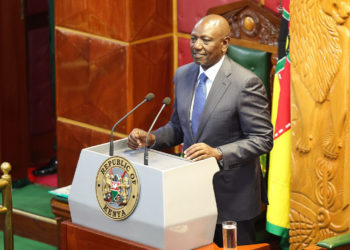The amount of money Kenyans abroad sent home in the month of March increased by 15.5 percent to Kshs47.2 billion from Kshs40.9 billion recorded in February.
In its weekly bulletin, CBK notes that for the 12 months to March this year, the inflows increased to Kshs532.3 billion compared to Kshs518 billion in a similar period in 2022.
The growth may be attributed to a systematic ease in inflation in developed nations that has been squeezing disposable income.
The US remains the largest source of remittances into Kenya, accounting for 58 percent.
The amount received was quickly swallowed by diminishing forex reserve that has seen the shilling tumble to its weakest against the US dollar.
Read: CBK’s 2023 Economic Growth Outlook
The apex bank noted that the 6.4 billion in the foreign currency reserve would last over the next 3.6 months in compliance with the country’s threshold of at least four months of import cover.
The regulator said that the reserves were adequate pursuant to the bank’s regulations. Kenya has breached adequacy ratios for the East Africa Community of at least 4.5 months of import cover since mid-last year.
Despite this, CBK insists that the sufficiency of the reserve will enable importers to continue with their business without any hindrance.
The growth in diaspora remittances did little to save the sinking shilling which dropped to a new low of 134.0 against the greenback compared to 133.0 units the previous week.
The Shilling has been weakening against the dollar since the beginning of 2020, losing approximately 35 percent of its value.
Year-to-date, the shilling has weakened by about 16 percent, prompting costlier imports and more pressure on the dwindling forex reserves which act as buffers to potential external shocks for the country.
Email your news TIPS to editor@thesharpdaily.com


![[Photo/Courtesy]](https://thesharpdaily.com/wp-content/uploads/cbk-1-750x375.jpg)















